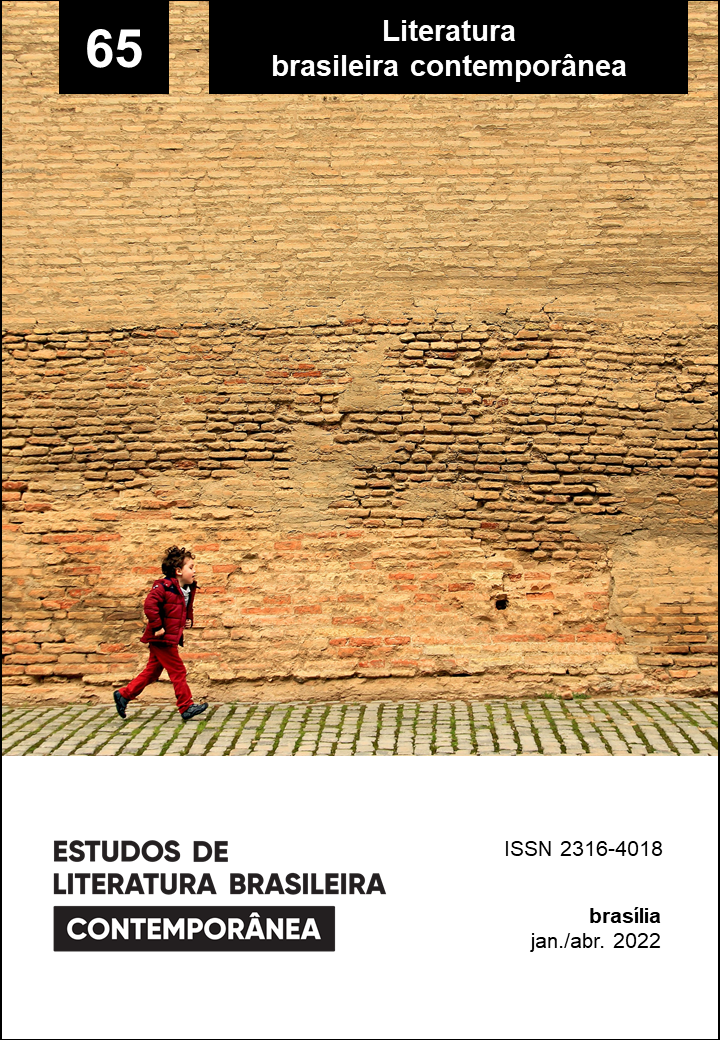Fronteiras da alteridade: os animots de Milton Hatoum em Relato de um certo Oriente
DOI:
https://doi.org/10.1590/2316-40186508Keywords:
Tale of a certain Orient, Milton Hatoum, animality, The Animal That Therefore I AmAbstract
Published in 1989, Milton Hatoum’s debut novel, Tale of a Certain Orient, is marked by several decenterings that are revealed even in the plot of his book. This work aims to examine these decenterings, especially with regard to the relationships between the urban environment and the wild environment, as represented in Manaus, the setting for the book. In an in-depth examination of border relations, the ones between humans and animals will be investigated, more specifically, and the animality itself expressed in the work. The episode of the human bush, a character that took place in the sixth chapter of Hatoum’s novel and which aroused controversies among critics, will be analyzed from a perspective that recognizes the structural importance of the character and his adequate integration into the work. Finally, in the light of Jacques Derrida's thought, in his essay, The Animal That Therefore I Am, a new questioning of the boundaries of individuation will be proposed, which suggests a complex intertwining between the characters and resumes the notions of alterity.
Downloads
References
ALBUQUERQUE, Lindalva Alves de (2010). Um relato oscilante: a Amazônia de Milton Hatoum, em Relato de um certo Oriente. Dissertação (Mestrado em Literatura Brasileira) – Universidade de Brasília, Brasília.
BHABHA, Homi (2003). O local da cultura. Tradução de Myriam Ávila, Eliana Lourenço de Lima Reis e Gláucia Renata Gonçalves. Belo Horizonte: Editora UFMG.
DELEUZE, Gilles; GUATTARI, Félix (2007). Mil Platôs: capitalismo e esquizofrenia. São Paulo: Editora 34. v. 2.
DELEUZE, Gilles; GUATTARI, Félix (2017). Mil Platôs: capitalismo e esquizofrenia. São Paulo: Editora 34. v. 1.
DERRIDA, Jacques (2002). O animal que logo sou: (a seguir). Tradução de Fábio Landa. São Paulo: Editora da Unesp.
ESPINOSA, Baruch de (2014). Breve tratado de Deus, do homem e do seu bem-estar. Tradução de Emanuel Angelo da Rocha Fragoso e Luís César Guimarães Oliva. São Paulo: Autêntica.
HATOUM, Milton (2004). Relato de um certo Oriente. São Paulo: Companhia das Letras.
ISER, Wolfgang (1999). O ato da leitura: uma teoria do efeito estético. Tradução de Johannes Ketschmer. São Paulo: Ed. 34. v. 2.
LEIBNIZ, G. W. (2009). A monadologia e outros textos. Organização e tradução de Fernando Luiz Barreto Gallas e Souza. São Paulo: Hedra.
PAZ, Octávio (2012). O arco e a lira. São Paulo: Cosac Naify.
RIBEIRO, Claudio de Oliveira (2015). A contribuição das noções de entre-lugar e de fronteira para a análise da relação entre religião e democracia. Revista de Estudos da Religião, São Paulo, v. 15, n. 2, jul./dez. Disponível em: https://revistas.pucsp.br/index.php/rever/article/view/26193/18855 Acesso em: 6 mar. 2020.
SAID, Edward W. (2005). Representações do intelectual: as conferências Reith de 1993. Tradução de Milton Hatoum. São Paulo: Companhia das Letras.
SAID, Edward W. (2007). Orientalismo: o Oriente como invenção do Ocidente. São Paulo: Companhia das Letras.
Downloads
Published
How to Cite
Issue
Section
License
Copyright (c) 2022 Fábio Antônio Dias Leal

This work is licensed under a Creative Commons Attribution-NoDerivatives 4.0 International License.
Authors who publish in this journal agree to the following terms:
a) The authors maintain the copyright and grant the journal the right of first publication, the work being simultaneously licensed under the Creative Commons Attribution License-Non Commercial 4.0 which allows the sharing of the work with acknowledgment of the authorship of the work and publication this journal.
b) Authors are authorized to enter into additional contracts separately, for non-exclusive distribution of the version of the work published in this journal (eg publish in institutional repository or as a book chapter), with authorship recognition and publication in this journal.
c) Authors are allowed and encouraged to publish and distribute their work online (eg in institutional repositories or on their personal page) after the editorial process, as this can generate productive changes, as well as increase the impact and citation of published work (See The Effect of Free Access).
d) The authors of the approved works authorize the magazine to, after publication, transfer its content for reproduction in content crawlers, virtual libraries and the like.
e) The authors assume that the texts submitted to the publication are of their original creation, being fully responsible for their content in the event of possible opposition by third parties.


